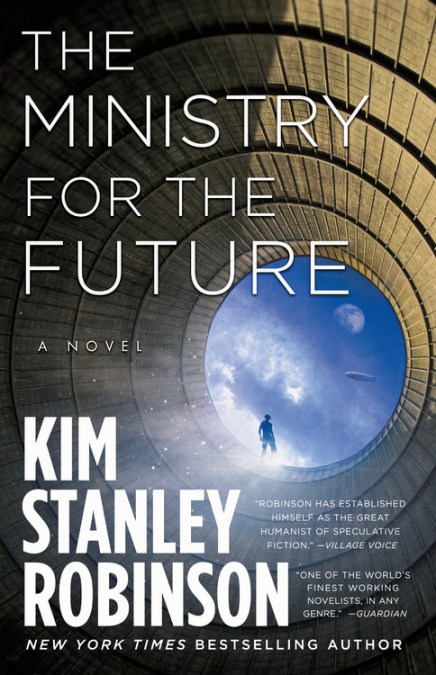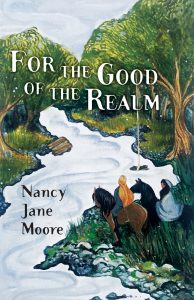 Black Sun, by Rebecca Roanhorse (Saga)
Black Sun, by Rebecca Roanhorse (Saga)
This novel was my introduction to the work of Rebecca Roanhorse, of whom I had heard a great deal. From the beginning, I was struck by the originality of her world and cultures that were at once relatable and quite different from the typical Western-European-derived canon. Set in a fantasy pre-Columbian (or non-Columbian?) Central America, the story weaves together the lives of disparate characters, who will all come together at “the Convergence,” a predicted eclipse. The story is told from multiple points of view, jumping back and forth in time. This is often a recipe for reader confusion and disengagement, but I found the characters compelling enough to hold my interest and to welcome each new section. I found the jumps in time distracting and largely unnecessary, but I admit to a personal preference for chronologically linear stories. In the end, though, it was the novelty and richness of the world that enchanted me.
Trouble the Saints, by Alaya Dawn Johnson (Tor)
The core of the magic in this edgy, often disturbing fantasy is that the anguish of slaves was so deep, so powerful, that it created a spell persisting to the modern age. This takes the form of bespelled hands – hands that can detect a person’s darkest secrets, hands that can tell the future – and hands that crave justice. In 1940s New York, the descendents of those slaves, men and women gifted with magical hands, often end up on the wrong side of the law. Phyllis, the first of these characters, is an enforcer for a white mobster, his “avenging angel.” Her best friend, Tamara, dances with a snake and tells fortunes at the mobster’s night club. And Dev, who loves them both, is a bartender by night and police informant by day. But someone has been targeting Blacks and harvesting their hands…
Trouble the Saints is a difficult book to describe. It’s not an easy or comfortable read, but it is an important book, fearlessly delving into issues of racism, injustice, murder, greed, and forgiveness.
 House of the Patriarch, by Barbara Hambly (Severn House)
House of the Patriarch, by Barbara Hambly (Severn House)
This latest “Benjamin January” mystery begins with yet another commission to find a missing daughter. In this case, the lost girl is a young lady from a modestly well-to-do white family, recently introduced into society but given to fanciful questions. The last thing Ben wants is to leave his family and put himself at risk of being nabbed by slave-catchers, or worse. But the fee will mean his family’s security during a long lean season.
That said, House of the Patriarch stands apart in its depiction of the social experiments that flourished at the time. Spiritualism (séances, communicating with the dead), communal living, charismatic leaders, all abounded. The Mormon church and others trace their beginnings to this time. The “House” to which Ben ventures is the resident of one such leader. Since the leader has also a reputation for helping escaped slaves on their route to Canada, Ben disguises himself as such and quickly infiltrates the hidden areas of the house. Needless to say, plot twists and dark secrets abound.
Hambly marries her knowledge of history and social customs to a pitch-perfect story of human fears and longing.
Phoenix Extravagant, by Yoon Ha Lee (Solaris)
I loved Lee’s Ninefox Gambit and Raven Stratagem, so I dove into Phoenix Extravagant in the hopes it would be just as good. I was wrong – it’s better! In a fantasy Korea-like land, newly conquered by fantasy-Japan, a young artist, Jebi, ekes out a living selling conventional mass-appeal paintings. An orphan, they live with their sister in an uneasy relationship. Okay, I was hooked. First, my own sister is an artist and I love the protagonist being a gifted painter longing to do original work instead of copying others. Second, how cool is it to have a nonbinary primary character in a world in which this is no big deal???
Back to the story: Jebi’s plan to better their (and their sister’s) conditions is to pass the exam for the Academy of Art. Much to their dismay, they aren’t admitted even though their work is perfect. They are subsequently recruited/drafted by the Ministry of Armor, the propaganda arm of the fantasy-Japan occupiers. Who have been extracting magical pigments from priceless original fantasy-Korean art (which involves total demolition of the pieces). Jebi reacts with horror to the destruction of his nation’s cultural heritage. The most rare and prized of these pigments is “Phoenix Extravagant,” vital for the mystical sigils used in controlling masks for automata – including a sentient, robotic dragon destined to be a war weapon. The dragon turns out to be a pacifist at heart, in no small part due to its no-harm programming.
What happens next, with all its twists and turns, is wildly inventive, full of heart and longing and magic. I adored Jebi and the woman duelist-prime, and most of all, the dragon. I can hardly wait for Lee’s next book! Continue reading “Curling Up With a Good Book, February 2021 Edition”…




 Here’s my review of For the Good of the Realm, by Treehouse Writer’s own Nancy Jane Moore (Aqueduct)
Here’s my review of For the Good of the Realm, by Treehouse Writer’s own Nancy Jane Moore (Aqueduct) Black Sun, by Rebecca Roanhorse (Saga)
Black Sun, by Rebecca Roanhorse (Saga)
 House of the Patriarch, by Barbara Hambly (Severn House)
House of the Patriarch, by Barbara Hambly (Severn House)
 The Glass Magician, by Caroline Stevermer (Tor). What a delightful tale, set in an early 20th Century world in which humans are divided into ordinary Solitaires, shape-shifting Traders, and ecology-minded Silvestri. The story focuses on Thalia, a magic performer, and her manager, Nutall, who’s acted as a parental figure after the deaths of her parents. When a rival stage magician gets them booted from their gig using a noncompete clause, their future looks grim. Then the rival turns up dead and Nutall is the prime suspect. To make matters worse, Thalia, who has always believed herself to be a nonmagical Solitaire, under the stress of a trick gone dangerously wrong, shape-shifts (“Trades”). Newly fledged Traders are not yet in control of their powers and become the prey of magic-consuming manticores. Now Thalia’s very life is at risk until she can master her magic, at the same time she’s determined to prove her mentor’s innocence and unmask the real murderer. The world and its characters are beautifully, charmingly drawn, with the effortless skill of a consummate storyteller.
The Glass Magician, by Caroline Stevermer (Tor). What a delightful tale, set in an early 20th Century world in which humans are divided into ordinary Solitaires, shape-shifting Traders, and ecology-minded Silvestri. The story focuses on Thalia, a magic performer, and her manager, Nutall, who’s acted as a parental figure after the deaths of her parents. When a rival stage magician gets them booted from their gig using a noncompete clause, their future looks grim. Then the rival turns up dead and Nutall is the prime suspect. To make matters worse, Thalia, who has always believed herself to be a nonmagical Solitaire, under the stress of a trick gone dangerously wrong, shape-shifts (“Trades”). Newly fledged Traders are not yet in control of their powers and become the prey of magic-consuming manticores. Now Thalia’s very life is at risk until she can master her magic, at the same time she’s determined to prove her mentor’s innocence and unmask the real murderer. The world and its characters are beautifully, charmingly drawn, with the effortless skill of a consummate storyteller.

